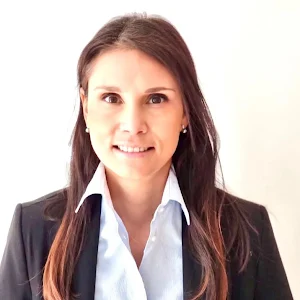Rooting Institutional Change in Personal Practice Rooting Institutional Change in Personal Practice

By Karolyn Kinane
About seven years ago, contemplative practice had deepened my capacities for and commitment to love and presence to such a degree that I found I could no longer teach and ask students to learn in the same ways I had been. My personal life felt fine but at my small, rural, New Hampshire state university I felt enveloped by students’ distress, colleagues’ stress, and a sense of general dispiritedness and joylessness. Students who, as children, had loved reading, claimed that now, as English majors, they despised it. And so, that August, I knew I had to make a change. The idea of institutional change did not even occur to me. Instead, I started with two questions of myself: How was my pedagogy turning love into hatred? And, How was I depleting those I aimed to nourish?
Through reflection, I developed three goals for my professional persona.
1. Don’t be part of the problem. I worked in a culture of busy-ness. My colleagues and I regularly competed in the “stress Olympics.” When someone asked “How are you?” the correct answer was either “Busy!” or “Drowning in grading,” or perhaps with a tired smile, “Stressed but good.” I decided I would drop out of that game. Yes, I had lots of things to do; we all did. But I also had many other ways to answer that question! So whenever anyone at work asked how I was doing, I chose to share something neutral or positive. “Good—went for a sweet hike yesterday,” or “Looking forward to a family visit next weekend.”
2. Use my power to grant permission. Sure there are many things I am powerless to change or control. But I noted the many places where I did have power and I examined how I used it. As a mentor to new faculty, a professor to students, or a manager of staff, I decided to grant people around me permission to value their well-being. If someone replied to my “How are you?” with one of the typical “stressed” or “busy” responses, I asked if they could look forward to some rest this coming weekend or if they had some fun-time planned. I set the expectation that they would get rest, eat well, and tend to their personal relationships.
3. Bring vocabulary of well-being into workspace. Emotional experiences and personal well-being have been taboo or ignored topics in many professional settings. I decided to talk about this stuff casually and occasionally—in committees, course work, and informal interactions. When appropriate, I modeled whole-human being.
Over the next four years I organized a variety of campus experiences that were all rooted in my own practice and needs, which made every endeavor immanently sustainable. For example, over summer and winter breaks I invited colleagues to read a contemplative book or article with me and gather for brunch & discussion.
Our first reading was “The Heart of Higher Education: A call to renewal” by Arthur Zajonc and Parker Palmer. From that first gathering I identified a core of about fifteen colleagues and collaborators who helped build what has become Contemplative Communities. We went on to host Meditation Mondays (10 minutes of practice each week 12:05-12:15 p.m. in the Student Union, centrally located on campus), partner with Student Life to host a variety of events, and eventually develop a suite of contemplative courses.
While launching these small, collaborative endeavors, I simultaneously transformed all six of my courses with the help of a Summer Session at CMind. From Freshman-level General Education to Senior-level seminars, I redesigned course content to serve questions of meaning and purpose. I modified the skills of reading and writing to develop connection, not merely critique. Classroom culture fostered collaboration rather than competition. And all elements of course design sought to develop and engage the disposition of curiosity. One might ask: Why hadn’t I been teaching this way all along? Good question!
As this rural New England university recently began to reorganize around interdisciplinary and experiential learning, I started hosting workshops for faculty, taking students to conferences, and publishing on contemplative teaching and learning. We now have a contemplative Student Organization (Contemplative Action; Purposeful Expression), a cross-campus Advisory Board (made up of faculty, staff, students, and community members), and a suite of four General Education courses that allow students to take a “Contemplative Pathway” through their foundational requirements: Science (“Curiosity & the Nature of New Hampshire”), Social Science (“Curiosity, Ethics & the Public Good”), Humanities (“Curiosity, Perspective, & Shakespeare””), and Creative/Fine Arts (“Curiosity, Playfulness & Creativity”).
Just last month these courses formed a key part of a large grant the university received in order to transform pedagogy campus-wide. Contemplative Communities now has over one hundred faculty, staff, students, and active regional partners. The group collaborates with campus and regional folks in Environmental Sustainability, Sexual Assault & Domestic Violence Awareness, Adventure Education, Public Health, and even University Orientation and Homecoming activities. It is a gentle, loving, joyful force on and off campus. And as facilitator I never took on more than I could handle joyfully.
For me, institutional change came about as a result of my personal practice. Sure– over the past seven years things got stressful and I got busy. But I always returned back to my three core goals, which made change sustainable, infused it with joy, and enabled loving, long-term transformation.














































Leave a Reply